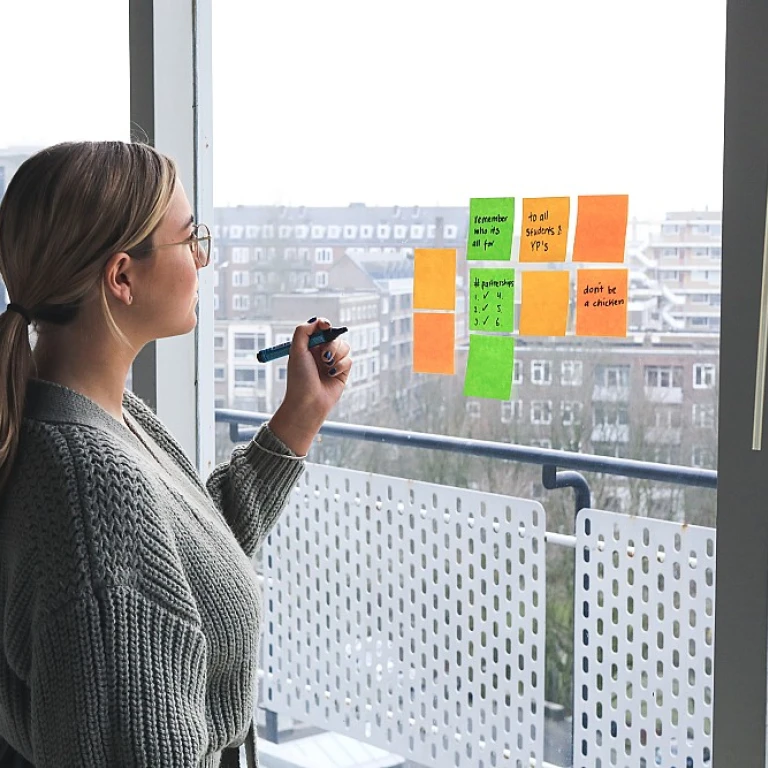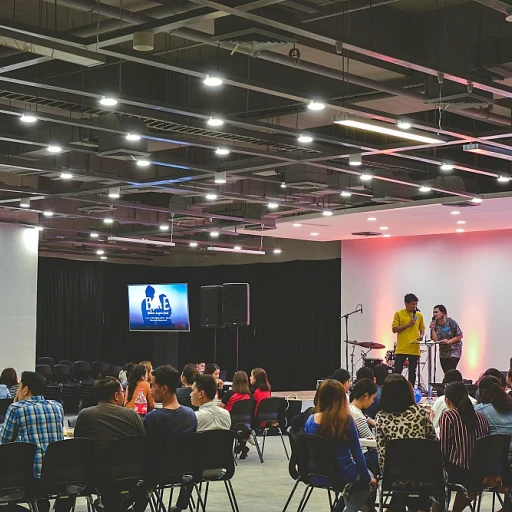
Understanding the Purpose of an Intake Meeting
Grasping the Objective
The intake meeting is a pivotal stage in the recruitment process, serving as a critical touchpoint where initial alignment between the hiring manager and recruiters is established. This meeting sets the groundwork for a successful recruitment effort by clarifying the role's job requirements and the ideal candidate profile. Understanding the purpose of this meeting is essential for ensuring that everyone involved, from the hiring team to the recruiters, has a clear understanding of what is needed to move forward with precision.
In an intake meeting, the main objective is to synchronize the expectations and goals of all parties involved. This includes discussing crucial elements like the job description, the candidate profile, and the recruitment strategy. It's about transforming vague job specs into a well-defined map that guides recruiters in identifying the pool of candidates that best fit the role in question. Misalignment here can result in a lengthy and inefficacious recruiting process, often leading to the selection of candidates who do not meet the organization's expectations.
The hiring manager’s input is invaluable here, as they will provide insights into the team dynamics and specific role nuances. This meeting is not merely procedural, but a strategic endeavor that requires preparation and insight from all participants to shape a coherent and effective hiring process. Misjudging or skipping this step could lead to challenges later in the process, such as miscommunication or misaligned roles.
For those interested in understanding more about the significance of intake meetings in different sectors, navigating the landscape of oil and gas recruitment offers insights into how these meetings play out in specialized fields.
Key Elements of a Productive Intake Meeting
Essential Components for a Successful Meeting
To ensure that your intake meetings are effective and productive, it is crucial to focus on several key elements. These components will help streamline the recruitment process and align the expectations of all parties involved, including the hiring manager, recruiters, and the hiring team.
Clear Understanding of the Role
Before diving into the meeting, it is essential to have a comprehensive understanding of the role you are hiring for. This includes discussing the job description, job requirements, and the ideal candidate profile. The hiring manager should clearly articulate what they expect from the new hire, ensuring that recruiters can accurately convey this information to potential candidates.
Defining the Recruitment Strategy
Another critical element is establishing a recruitment strategy that aligns with the organization's goals. Discussing the recruitment process, including the interview process and any specific recruiting intake procedures, will help set a clear path forward. This strategy should be flexible enough to adapt to the dynamic nature of the talent acquisition landscape.
Setting Expectations and Responsibilities
During the intake meeting, it is vital to define the roles and responsibilities of each team member involved in the recruitment process. This includes clarifying the expectations for recruiters, the hiring manager, and other stakeholders. By doing so, you minimize the risk of miscommunication and ensure everyone is on the same page.
Asking the Right Questions
Effective intake meetings involve asking the right questions to gather the necessary information. Recruiters should prepare a list of questions that cover all aspects of the hiring process, from the specifics of the candidate profile to the nuances of the job requirements. This will help in identifying any potential challenges early on.
Leveraging Technology
Incorporating technology can significantly enhance the efficiency of intake meetings. Tools that facilitate collaboration and communication among team members can streamline the entire process. For more insights on navigating the landscape of recruitment, particularly in specialized fields, you can explore navigating the landscape of oil and gas recruitment.
Common Challenges in Intake Meetings and How to Overcome Them
Addressing the Roadblocks in Intake Meetings
Candidate sourcing via intake meetings undoubtedly holds immense potential in refining and streamlining the recruitment process. However, like any procedural gathering, intake meetings come with their unique set of challenges that recruitment teams might face along the way. One common hurdle is the mismatch of expectations between the recruiter and the hiring manager. Without a shared understanding of the job requirements and the ideal candidate profile, misunderstandings can arise. Indeed, it is crucial that expectations are clearly communicated early in the process to avoid setbacks later on. Another problem often encountered is vague or incomplete job descriptions that do not capture the full scope of the role. This can limit the recruitment team’s ability to attract top talent effectively and may result in unsuitable candidates being sourced. Ensuring detailed and compelling job descriptions can be a pivotal step towards attracting the right candidates. Crafting compelling job ads to attract top talent can serve as a valuable approach in overcoming this challenge. Effective time management is another vital element. Meetings tend to draw the ire of stakeholders when they stretch on without clear directives or resolutions. Having a concise agenda, and sticking to it, will prevent meetings from becoming unnecessarily lengthy. Lastly, multi-stakeholder input, while essential, can make meetings unwieldy if not managed appropriately. Establishing a clear framework to ensure that everyone's voice is heard without diverging from the meeting’s core objectives is crucial. Leveraging technology, as discussed in the other parts of this article, can also significantly enhance how the recruitment team navigates these meetings. By recognizing these common challenges and taking proactive measures to address them, recruitment moguls can transform intake meetings from potential bottlenecks into efficient stepping stones within the hiring process.Best Practices for Conducting an Effective Intake Meeting
Setting Clear Expectations
One of the most crucial aspects of a successful intake meeting is establishing clear expectations. This involves aligning the hiring manager and the recruitment team on the job requirements and the ideal candidate profile. By doing so, you ensure that everyone involved in the recruitment process is on the same page, reducing the risk of miscommunication and potential setbacks later in the hiring process.
Preparing Thoroughly
Preparation is key to an effective intake meeting. Recruiters should come equipped with a comprehensive understanding of the role, including the job description and the necessary qualifications. This preparation allows for a more informed discussion about the candidate profile and the recruitment strategy. Moreover, it sets the stage for asking insightful questions that can help clarify any uncertainties about the role.
Engaging the Hiring Manager
Engaging the hiring manager is vital for a productive intake meeting. Encourage hiring managers to share their insights and expectations for the role. This collaborative approach fosters a sense of partnership between the recruiter and the hiring manager, which is essential for a successful recruitment process. By actively involving the hiring manager, you can gain valuable insights into the team dynamics and the specific skills needed for the job.
Documenting the Discussion
Documenting the outcomes of the intake meeting is another best practice that cannot be overlooked. This documentation serves as a reference point throughout the recruitment process, ensuring that all parties have a clear understanding of the agreed-upon expectations and strategies. It also aids in maintaining consistency and accountability, as everyone involved can refer back to the documented notes if any questions or discrepancies arise.
Following Up
Finally, follow-up is an essential component of an effective intake meeting. After the meeting, the recruiter should send a summary of the discussion to all participants. This follow-up not only reinforces the key points covered but also provides an opportunity to address any additional questions or concerns. It demonstrates professionalism and commitment to the recruitment process, ultimately contributing to a more efficient and successful hiring journey.
The Role of Communication in Intake Meetings
Effective Communication: The Cornerstone of Intake Meetings
Communication is the heartbeat of successful intake meetings, setting the tone for the entire recruitment process. While the purpose and elements of an intake meeting lay the groundwork, it is the quality of communication that brings these meetings to fruition. This entails aligning expectations, clarifying the job description, and ensuring every stakeholder involved in the recruitment is on the same page. The hiring manager's role in this process cannot be overstated. They are the primary source of information regarding the job role, candidate profile, and expectations from the upcoming recruitment. It is essential for the recruiter to ask the right questions to capture a comprehensive understanding of what is required. Open-ended questions allow for more detailed responses, which can significantly enhance the communication flow and provide valuable insights. When building a strong communication channel, it's crucial that all parties—including the hiring team—are encouraged to share their perspectives. This collective input can help refine the candidate profile and align everyone's efforts towards attracting the ideal candidate. Moreover, actively listening to concerns or suggestions during the meeting can help prevent misunderstandings and ensure a smooth interview process later on. Another aspect to consider is how communication extends beyond just verbal exchanges. Written communication, such as meeting minutes or shared documents, plays a significant role in maintaining transparency and can serve as a reference point throughout the recruitment process. These documents can also help in addressing any discrepancies that may arise and keep the process on track. Lastly, fostering a culture of continuous feedback within the recruitment strategy allows for ongoing improvements in communication techniques, making subsequent intake meetings more effective and efficient. By placing a strong emphasis on communication, recruiters and hiring managers can navigate the complexities of recruitment with greater ease, ultimately leading to successful hires.Leveraging Technology to Enhance Intake Meetings
Utilizing Technology for Effective Meetings
In today's digital age, leveraging technology has become pivotal in streamlining the intake meeting process. Technology not only enhances communication and efficiency but also helps in accurately documenting meeting outcomes, thereby aiding recruiters and hiring managers. Implementing digital tools can:- Facilitate seamless communication: Video conferencing platforms allow recruitment teams to connect with hiring managers who may be geographically dispersed. This ensures everyone's voice is heard and the team is aligned with job requirements and candidate expectations.
- Enhance information sharing: Collaboration tools enable real-time sharing and editing of documents such as job descriptions or candidate profiles. This ensures all team members have the current information, reducing potential miscommunications.
- Improve scheduling: Calendar integration can streamline the scheduling of intake meetings, ensuring the availability of all relevant stakeholders like recruiters and hiring managers.
- Aid in candidate tracking: Applicant tracking systems (ATS) can be used to manage and review candidate profiles, roles, and job descriptions. By having all pertinent information in one place, recruiters can efficiently guide the recruitment process, directly from intake to interview and eventual hire.












